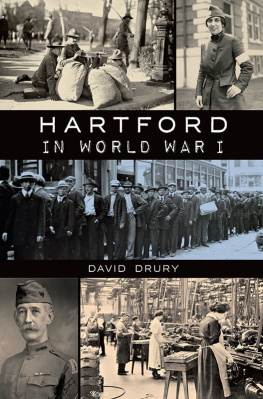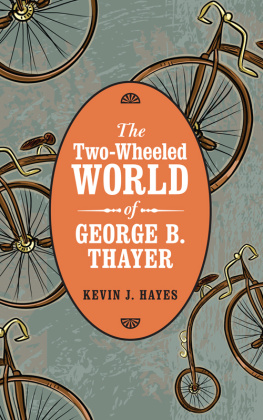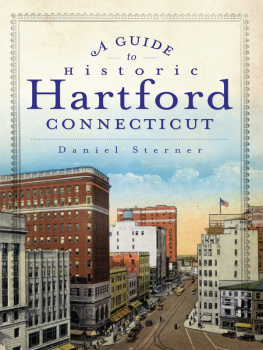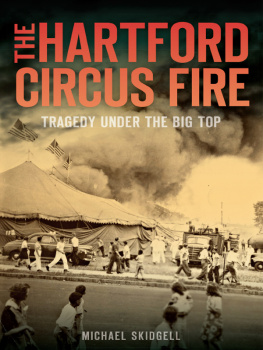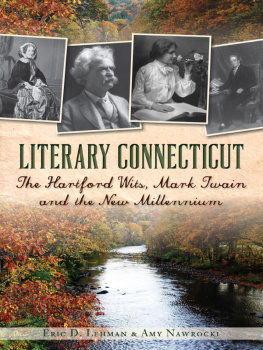


Published by The History Press
Charleston, SC
www.historypress.net
Copyright 2015 by David Drury
All rights reserved
Front cover, bottom left: YMCA field secretary Frank E. Johnson of Hartford, Connecticut State Library.
First published 2015
e-book edition 2015
ISBN 978.1.62585.307.3
Library of Congress Control Number: 2015949271
print edition ISBN 978.1.62619.796.1
Notice: The information in this book is true and complete to the best of our knowledge. It is offered without guarantee on the part of the author or The History Press. The author and The History Press disclaim all liability in connection with the use of this book.
All rights reserved. No part of this book may be reproduced or transmitted in any form whatsoever without prior written permission from the publisher except in the case of brief quotations embodied in critical articles and reviews.
IN MEMORY OF MY SISTER, DENISE, WHO URGED ME TO WRITE A BOOK
CONTENTS
ACKNOWLEDGEMENTS
My fascination with the Great War began almost a half century ago. Perhaps it was from reading Barbara Tuchmans The Guns of August in high school. Or maybe it was triggered by British historians of the period, like A.J.P. Taylor or B.H. Liddell Hart, whose work I read in college. Whatever the cause, the effects were long-standing, reaching a pinnacle in 1997, when I had the opportunity to visit the western front: Ypres, the Somme, the Chemin-des-Dames, the Marne Valley, Verdun, the Meuse-Argonne and several of the pristine cemeteries and monuments maintained by the American Battle Monuments Commission. When my piece about the trip was published in the travel section of my newspaper, the Hartford Courant, I could say I had written something about the Great War and cross it off my bucket list.
Then in late 2013, I received an e-mail from Tabitha Dulla, a commissioning editor with The History Press. Tabitha had read some articles I had written for the Courant on topics related to Connecticuts participation in the Civil War and asked whether I had any interest in writing a local history book. Having done a bit of research previously on Connecticut during World War I, I was aware that the Connecticut State Library maintained a wealth of holdings from the period. With the centennial of the Great War approaching and aware that the subject was something of a black hole in popular consciousnessan interlude between the Civil War and World War II that inspired highly costumed British period pieces for public televisionI thought I had my subject.
So began an eighteen-month project made possible with the help and guidance of many people and the remarkable advances in digital technology that allow a researcher access to hard-to-find documents and publications via home computer. Much of the flesh and bone of the book was developed from archives and materials available at or through the Connecticut State Library. My gratitude to the members of state librarian Kendall F. Wiggins History & Genealogy staff and, in particular, to Christine Pittsley, coordinator for Remembering World War I: Sharing History/Preserving Memories, a project undertaken by the Connecticut State Library, the University of Connecticut and Historypin to create a permanent, publicly accessible record of the states World War I experience. This book would not have taken the shape it did without Christines help.
Outside the state library, I received willing, enthusiastic support from research assistants and archivists, museum curators, librarians and leaders of local historical societies. Thanks go out to Pat Watson at the New Britain Public Library; Richard Ring, head curator of the Watkinson Library at Trinity College; Mary Jane Springman of the Simsbury Free Public Library; Barbara Strong of the Simsbury Historical Society; Laura Smith at the Thomas J. Dodd Research Center at the University of Connecticut; the Manchester Historical Society; and the staff at Waterman Research Center of the Connecticut Historical Society. Karen Winslow Hudkins, director of the New Britain Industrial Museum, opened a window into the Hardware Citys manufacturing past. Nancy Macaione, an Aetna Company archivist, photocopied a file of company wartime documents. Jessica Jenkins, collections curator of the Litchfield Historical Society, shared images from its poster collection. Melanie Anderson Bourbeau of the Hill-Stead Museum provided materials documenting Theodate Popes ordeal aboard the Lusitania. Thanks also go to Robert Ellis of the West Haven (Connecticut) Veterans Museum for the brilliant photographic images from the museums collection, the Rau-Locke American Legion Post 8 and the Legions Connecticut historian Frazier Brinley. Finally, special thanks go to Carol Denehy for her generous sharing of the holdings of the Memorial Military Museum of Bristol, begun by her late husband.
Finally, love and gratitude go to my wife, Kitty, for her patience and support.
INTRODUCTION
In July 2014, at the dawning of the centennial of the Great War, a group of scholars shared their thoughts about the cataclysmic event during a panel discussion at the National World War I Museum in Kansas City, Missouri. Dr. Chad Williams, associate professor and chairman of the Africa and Afro-American Studies Department at Brandeis University, summarized with elegant simplicity the importance of the period: World War I was a big deal. It mattered in many waysif I had to choose one word, I would characterize it as tragic. It was a tragic historical moment but one that was incredibly important to how we think about the world today.
World War I was, indeed, a big deal, a global conflict waged on a massive industrial scale that left no one who lived through it untouched. This was true not only in Europe but also in the United States, which entered the war in April 1917 after prolonged, prosperous neutrality. The state of Connecticut had shared in the fruits of that neutrality, most prominently the gun makers and munitions manufacturers in Bridgeport, New Haven and the capital city of Hartford, where Colts Patent Firearms Manufacturing Co. had European connections dating back to the time of Samuel Colt himself.
Colts famous revolvers had put Hartford on the worlds industrial map, but by the late nineteenth century, the citys reputation for manufacturing innovation and ingenuity had expanded well beyond gun making. Precision milling machinery and machine tools, threaded screws and sewing machines, bicycles and typewriters churned from its factories. That industrial dynamism continued into the early twentieth century, even as the ethnic makeup of Hartfords craftsmen and shop workers broadened and diversified. Waves of newly arrived immigrants brought many nationalities, representing countries and regions on opposing sides of the European war, into the city. A similar pattern existed in the smaller Hartford County industrial centers like New Britain, Manchester, Bristol and Enfield. The regions industrial capability made it critical to the nations war effort. During 191718, Hartford County factories turned out prodigious quantities of guns and munitions, mess kits and trench knives, gas masks and clothing and equipment to outfit the doughboys and Americas allies.
As a wounded soldier from Bristol observed in a letter home written from his hospital bed:
Next page
